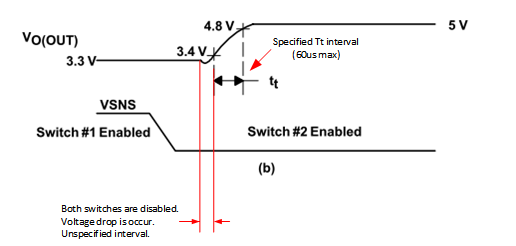Good day. Datasheet for TPS2112 have "transition time" specification (marked as "Tt"). The questions are:
1. Does that transition time already include worst case switchover delay during the IN1 to IN2 transition? In accordance with Figure 1b - it is not (since only rise time marked), but common sense dictate that switchover delay inside this specification.
2. If answer to question #1 is "Yes, worst case switchover delay is inside transition time parameter", next question: is that correct to have holdup capacitor designed for 60us max ? Or it can be reduced, since the actual switchover time is just a part of specified Tt = 60us ?



